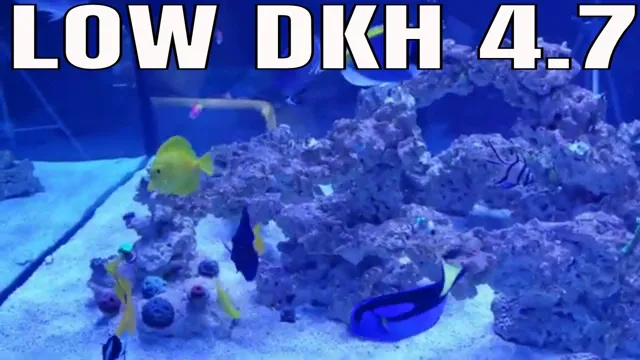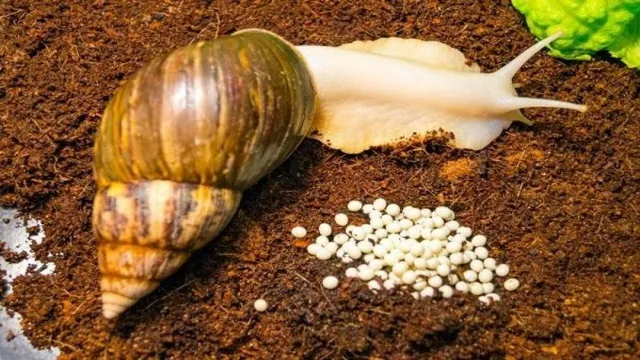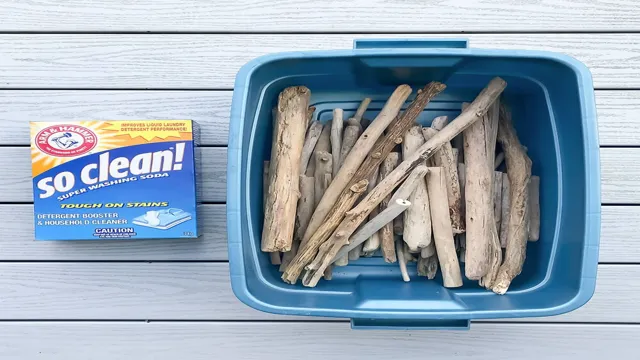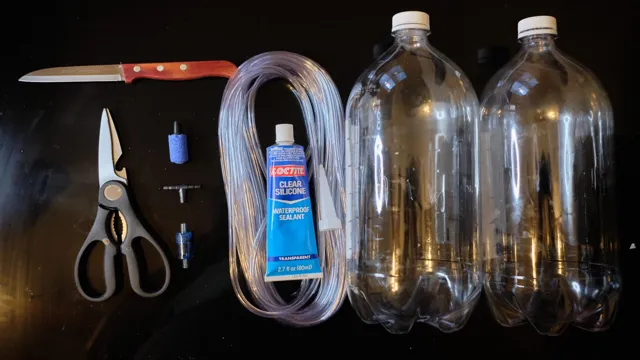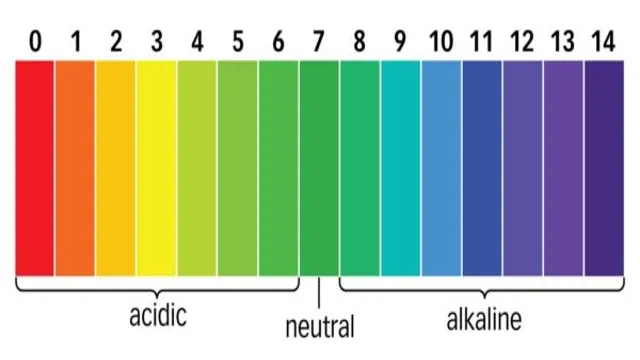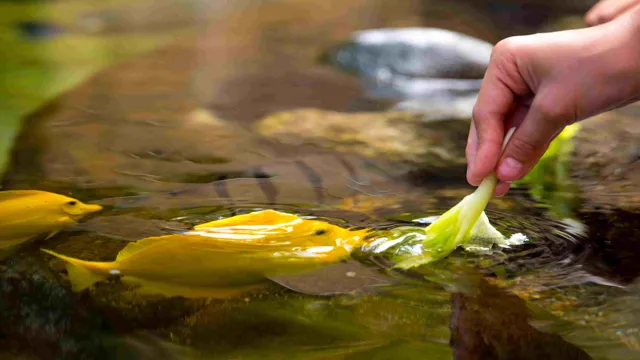Do you own an aquarium and want to ensure your aquatic pets’ health and longevity? One critical aspect to consider is the water’s KH level. KH, or carbonate hardness, is a measure of water’s ability to buffer acidic compounds. A high KH will ensure your aquarium’s water remains stable and your fish remain healthy.
However, a low KH can lead to instability, and eventual fish death. Decreasing your aquarium’s KH is a simple yet essential task that every aquarium owner must understand. In this comprehensive guide, we will take you step-by-step on how to decrease your aquarium’s KH, ensuring your aquatic pets remain healthy and happy.
Understanding KH
If you’re struggling with controlling the KH levels in your aquarium, there are a few different methods you can try to decrease it. One option is to use reverse osmosis (RO) water as a base for your aquarium water. This type of water is naturally low in KH and will help decrease it overall.
Another option is to add peat moss to your filter. The tannins in the peat moss will work to lower the KH levels over time. Lastly, you can try using a water conditioner that specifically targets KH levels.
Make sure to do your research before choosing a product to find one that is safe for your specific aquarium setup. By implementing these methods, you can successfully decrease the KH levels in your aquarium and provide a healthier living environment for your fish.
What Is KH?
If you’ve ever heard of the term KH when it comes to aquariums, you may be wondering what it stands for and what it means. KH is short for “carbonate hardness,” and it refers to how much calcium and magnesium are present in the water. Understanding KH is essential for maintaining healthy aquatic life in your tank.
A high KH level can help keep the pH level of your water stable, while a low KH level can make it harder to maintain a consistent pH. A simple test kit can help you determine the KH level in your aquarium, and you can adjust it by adding buffer solutions or adjusting your water source. Keeping an eye on your KH level is crucial for creating a healthy and stable environment for your aquatic pets.
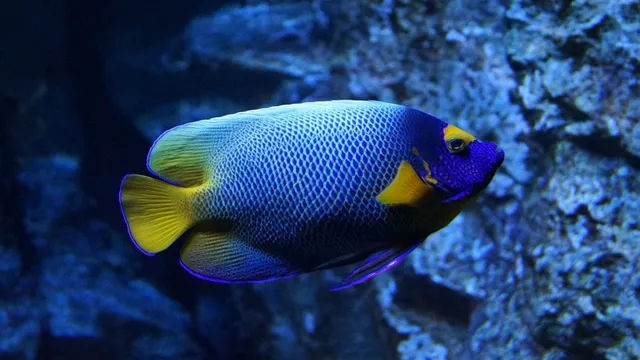
Why Is KH Important for Your Aquarium?
If you’re an aquarium owner, it’s essential to understand the importance of KH, or carbonate hardness. KH is a measurement of the carbonate and bicarbonate ions in your aquarium’s water. It helps to stabilize the pH levels and prevents sudden drops in acidity, which can harm your fish and other aquatic life.
KH also aids in the growth of beneficial bacteria that help break down waste and maintain a healthy environment for your aquatic pets. Additionally, a stable KH level allows for the efficient use of CO2 by plants, promoting their growth. So, if you want a thriving and healthy aquarium, it’s vital to pay attention to your KH levels and keep them within the appropriate range for your specific aquatic environment.
With the right care and attention, you’ll have a thriving underwater world in no time!
Measuring KH
One way to decrease KH in an aquarium is by measuring and adjusting the alkalinity levels. KH, or carbonate hardness, is a measurement of the amount of carbonates and bicarbonates in water. Excess KH can cause pH fluctuations, which can be harmful to aquatic plants and animals.
To measure KH, you can use a KH test kit, which usually involves adding drops of a reagent to a water sample until the color changes. Once you have determined your KH level, you can decrease it by gradually adding RO (reverse osmosis) water or distilled water to your aquarium. It’s important to do this slowly to avoid shocking your aquatic inhabitants.
Another option is to use KH reducing products that contain acids such as phosphoric acid or citric acid. However, these should be used with caution as they can also lower pH levels. Monitoring KH levels regularly can help you keep your aquarium environment healthy and stable.
How to Test KH?
Measuring the KH level in your aquarium is essential for ensuring the health and wellbeing of your aquatic pets. KH, or carbonate hardness, refers to the concentration of carbonate and bicarbonate ions in the water. It can affect the pH levels and buffering capacity, which can lead to stress and disease in fish and other aquatic organisms. (See Also: How to Make Saltwater Mimicking Ocean for Aquarium: A Step-by-Step Guide)
To test the KH level, you can use a simple test kit that measures the amount of acid needed to lower the pH of the water to a certain level. The lower the volume of acid needed, the higher the KH level, and vice versa. It is important to test the KH level regularly, especially if you add new water or decor to your aquarium, as these may affect the carbon hardness levels.
Maintaining a healthy KH level can help maintain a stable environment for your aquatic pets and ensure their long-term well-being.
Ideal KH Level for Different Aquariums
When it comes to maintaining a healthy aquarium, the ideal KH or carbonate hardness level can vary depending on the type of fish and plants you have in your tank. To measure KH, you will need a water test kit that can detect alkalinity levels. In general, a KH level of 3-7 dKH is recommended for a freshwater aquarium with a variety of fish and plants.
However, if you have a planted aquarium with a high demand for CO2, a KH level between 1-2 dKH can be beneficial. On the other hand, reef aquariums with coral require a higher KH level of 8-12 dKH to maintain stable pH levels. It’s essential to monitor your KH levels regularly and adjust if necessary to ensure a healthy and stable aquatic environment for your aquatic friends.
Methods to Decrease KH
If you’re having trouble with high KH levels in your aquarium, there are several methods to decrease it. One way is to perform partial water changes regularly to dilute the KH. You can also switch to a different type of substrate that has a lower buffering capacity to prevent the KH from rising in the first place.
Another option is to add acidic substances like peat moss or oak leaves to the water to lower the pH, which will also lower the KH. However, it’s important to monitor the pH carefully to prevent it from dropping too low and harming your fish. Finally, you can invest in a reverse osmosis (RO) system to remove KH from your tap water before adding it to the aquarium.
Overall, reducing KH levels requires a balance of monitoring, experimentation, and careful attention to the needs of your aquatic pets.
Using Reverse Osmosis Water
“Reverse Osmosis Water” If you’re trying to decrease the KH level in your aquarium, one method you can try is using reverse osmosis (RO) water. RO water is produced by pushing water through a semi-permeable membrane, which removes impurities such as minerals and salts. This results in pure, softened water that can help reduce KH levels.
To use RO water, you’ll need to invest in an RO system or purchase pre-made RO water from a pet store. Keep in mind that RO water can also remove beneficial minerals and may need to be supplemented with additives to ensure proper water quality for your fish. It’s important to note that while using RO water can help lower KH levels, it may also have an impact on other water parameters such as pH and GH.
It’s essential to regularly test your water and monitor all parameters to ensure a stable and healthy environment for your aquatic pets.
Diluting Aquarium Water
When it comes to maintaining a healthy aquarium environment, it is essential to keep the levels of certain parameters in check. One of these parameters is KH, or carbonate hardness. High KH levels can lead to pH instability and make it difficult for aquatic plants and animals to thrive.
To decrease KH levels, diluting aquarium water is an effective method. This involves replacing a portion of the aquarium water with pure, distilled water, which has a lower KH level. Another option is to use an ion exchange resin, which can remove carbonate ions from the water.
However, it’s essential to monitor KH levels regularly to avoid over-dilution or other imbalances. Overall, by adjusting KH levels through dilution or resin use, aquarists can maintain a stable and healthy aquarium environment. (See Also: How to Keep Sand Clean in Saltwater Aquarium: Ultimate Guide for a Healthy Habitat)
Adding Peat Moss
Peat moss is a type of organic matter that is effective in reducing the KH or carbonate hardness levels in aquariums. One method to decrease KH is to add peat moss to the aquarium substrate or filter. This natural substance slowly releases tannins that acidify the water in the tank, resulting in a lower KH level.
Peat moss not only reduces KH but also provides a natural decoration to the aquarium. It is advisable to use a good quality peat moss that is free from chemicals and pesticides. To use it, simply add a layer of peat moss to the bottom of the aquarium or place it inside the filter.
Keep in mind that the amount of peat moss needed depends on the size of the aquarium and current water parameters. It is recommended to monitor the KH levels and pH regularly after the addition of peat moss to ensure that the levels are stable and safe for aquatic life. With the use of peat moss, aquarium hobbyists can efficiently control the KH levels in their aquarium and provide a natural and healthy environment for their fish.
Using Buffering Solutions
Buffering solutions can be useful in controlling the pH level of water in aquariums and decreasing the KH levels. One method of decreasing KH levels is through the use of a buffering solution, which works by adding ions that bind to and remove carbonate hardness from the water. Another method is to use a combination of buffering solutions and reverse osmosis water to dilute the hardness of the water and lower the KH levels.
However, it is important to note that buffering solutions should be used with caution and under the guidance of a professional, as they can have an impact on other water parameters and may require frequent testing and adjustments. Ultimately, the best method for decreasing KH levels will depend on the specific needs of your aquarium and the type of fish and plants you have.
Preventing KH from Increasing
If you’re struggling with high KH levels in your aquarium, there are a few things you can do to decrease it. First, consider switching to a low KH substrate, such as silica sand or gravel. This will help buffer the water and prevent KH from increasing.
Additionally, you can use acidic buffering agents, such as peat moss or almond leaves, to lower KH levels. It’s important to monitor your water parameters regularly to ensure that the changes you’re making are having the desired effect. Remember, it’s always better to take preventative measures than to try to fix a problem once it has already occurred.
By following these steps, you’ll be well on your way to maintaining a healthy, balanced aquarium with ideal KH levels.
Regular Water Changes
One of the best ways to prevent KH (carbonate hardness) from increasing in your aquarium is by doing regular water changes. Every time you change out a portion of the water in your aquarium, you’re also removing any excess minerals and chemicals that may be contributing to a rise in KH levels. These minerals and chemicals can accumulate over time and lead to a buildup of KH, which can cause issues with pH and water hardness.
By performing regular water changes, you’re able to keep these levels in check and maintain a healthy and stable environment for your aquatic pets. So, how often should you do water changes? It depends on the size of your aquarium and the number of fish you have, but as a general rule, aim for at least a 25% water change once a month. If you have a heavily stocked tank, you may need to do more frequent water changes to keep KH levels under control.
Remember, prevention is key!
Limiting Carbonate Hardness Sources
Limiting carbonate hardness sources is an important task for any aquarium owner who wants to maintain healthy water conditions for their aquatic pets. One of the most significant contributors to carbonate hardness (KH) in aquarium water is limestone, which can release high levels of calcium carbonate into the water. Another source of KH is the tap water used to fill the aquarium; if the tap water has a high mineral content, it can significantly increase the KH.
To prevent KH from increasing, aquarium owners can use reverse osmosis (RO) water to replace evaporated water, which is low in minerals and will not contribute to KH levels. Additionally, chemical treatments like pH buffers and KH reducers can help to stabilize and decrease KH levels in the water. Maintaining proper KH levels is crucial for aquarium health, as high KH can cause pH swings and harm aquatic life. (See Also: How to Get Algae Off Aquarium Gravel – Top Tips and Tricks Explained)
By limiting carbonate hardness sources, aquarium owners can ensure a healthy and thriving aquatic environment for their pets.
Conclusion
In conclusion, decreasing the KH in your aquarium doesn’t have to be a daunting task. With a few simple steps, like incorporating CO2 injection and regular water changes, you can keep your fish and plants happy and healthy while achieving that coveted low KH level. Trust us, your aquatic pets will thank you for the effort.
Happy fish-keeping!”
FAQs
What is KH in aquarium water and why is it important?
KH, or carbonate hardness, is a measure of the water’s buffering capacity against pH changes. Maintaining a stable KH is important for the health of fish and plants in the aquarium.
How can I test the KH level in my aquarium water?
You can use a test kit specifically designed for testing KH levels in aquarium water, which typically involves adding a few drops of testing reagent to a water sample and observing the color change.
What is the ideal KH level for most aquariums?
The ideal KH level varies depending on the type of aquarium and inhabitants, but generally falls within the range of 3-8 dKH.
What are some common causes of high KH in aquarium water?
High KH levels can be caused by excessive use of buffer products, hard tap water, or the presence of certain types of rocks or substrates in the aquarium.
How can I lower the KH level in my aquarium water?
One way to lower KH is to perform partial water changes using a low-KH water source, such as reverse osmosis water. Another option is to use a product specifically designed to lower KH levels.
Will lowering the KH level affect the pH of my aquarium water?
Lowering the KH level can make the pH more prone to fluctuations, so it’s important to monitor pH closely and take steps to maintain a stable level.
What should I do if I’m having trouble maintaining a stable KH level in my aquarium?
If you’re having difficulty keeping KH levels stable, it may be helpful to investigate possible water source issues or consult with a knowledgeable aquarium expert for advice.

